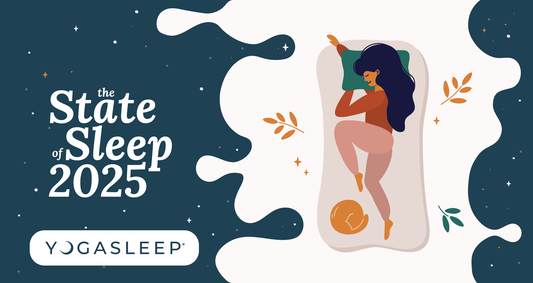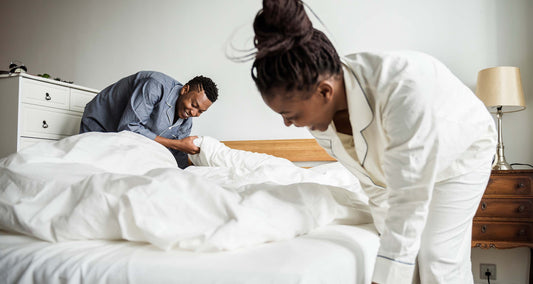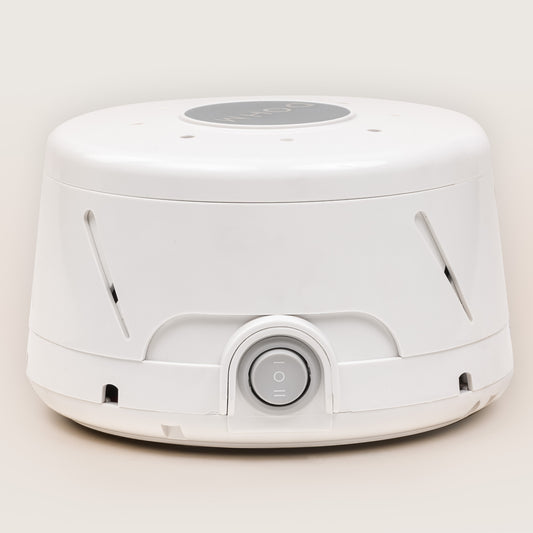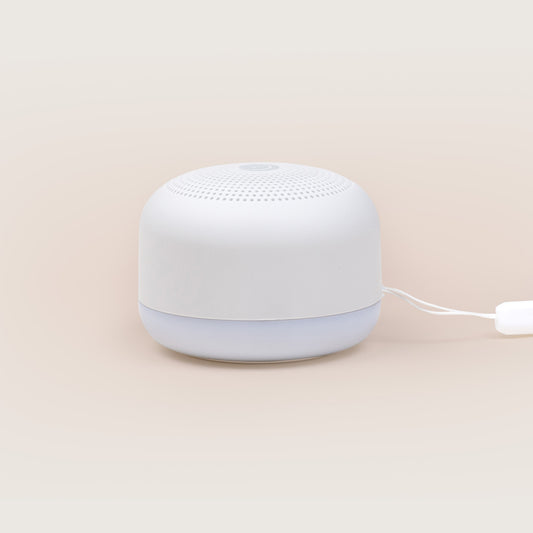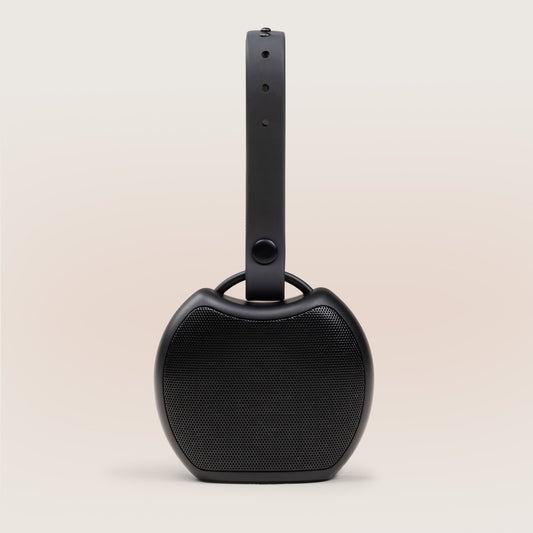
Brown Noise vs White Noise: The Main Differences
Imagine soundscapes bathed in color, each affecting you in a specific way. While it may sound like something out of a sci-fi show you’d find on a streaming service, it’s actually the fascinating world of colored noise. Similar to how light has different colors based on its wavelength, sound can be categorized by color based on its frequency. These “colors” of noise—with their unique tonal qualities—can influence relaxation, sleep, and concentration. But before we can unlock the power of colored noise to achieve optimal health, we’re here to answer the question: what's the difference between brown and white noise?
Frequencies
What is Brown Noise?
Deceptively named, brown noise has nothing to do with color. Instead, it takes its name from Brownian motion, a scientific term named after 19th-century Scottish botanist Robert Brown, after he discovered the way pollen grains suspended in water “dance” under a microscope. Brown noise, experts say, mimics that motion with sound signals that change at random, from one moment to the next. Also known as “red” noise, brown noise emphasizes lower frequencies while diminishing higher frequencies (like static).
The result is a deeper, more intense bass sound with a natural variation compared to the likes of pink or white noise. If you’ve felt more relaxed while listening to crashing waves, thunder, waterfalls or steady rainfall, you’ve experienced the soothing sounds brown noise can offer.
What is White Noise?
Of all the colors, this is probably the most recognized and popular. White noise covers the entire spectrum of sound that our ears can perceive. Meaning that unlike brown (aka red) noise, white contains and projects equal amounts of all audible frequencies, from lowest to highest, evenly all at once. It can be intense and high-pitched, and lacks a natural variation in the overall tonal quality, allowing for a steady flow of background noise. Examples include stating sounds you’d hear from a radio or television as well as a vacuum, hissing radiator, the gentle hum of an air conditioner or a whirring fan.
Benefits
What is Brown Noise Best For?
While scientific research on brown noise's benefits is still emerging, many have found it helpful based on their experiences and shared positive testimonials on social media. However, of the limited information available, one study found that brown noise actually enhanced the transition into REM sleep for some listeners.
Furthermore, other research suggests that the rhythmic pattern of brown noise may assist in synchronizing brainwaves, promoting relaxation and tranquility. This synchronization phenomenon, called “entrainment,” is when the brain aligns its electrical activity with the frequency of the external stimulus (brown noise). That very synchronization creates the perfect conditions for:
- Improved relaxation: Brown noise, with its grounding, natural earthy tones, can be an ideal backdrop for mindfulness and meditation practices. Think of it this way—it has a way of quieting your mind, helping you to be more present rather than in your own head.
- Improved sleep: The deep resonance and warmth can offer a level of comfort by calming your breathing and slowing down your heart rate, helping you fall asleep. Brown noise can also help mask random sounds that can startle and keep you awake.
- Improved focus: A 2017 study published in Applied Acoustics found that workers' ability to concentrate and perform specific tasks improved when modified brown masking noise was delivered using earphones. Furthermore, this sound may also have a positive impact on your working memory as it increases the firing rate of neurons in the brain.
What is White Noise Best For?
Because white noise is a blend of all audible frequencies projected simultaneously at equal intensity, it can be an effective tool for masking disruptive sounds. Its overall consistency and uniformity offer an audio privacy screen of sorts, allowing our brain to focus less on unpredictable changes in the environment for a quieter and more serene environment. Studies have shown the effect of white noise on humans for many years, finding evidence it can:
- Reduce crying in infants: Besides minimizing potential disturbances, white noise resembles what a baby hears in the womb. The familiar environment provides comfort, thus improving their ability to relax and fall asleep.
- Counteract symptoms of ADHD: In one study, participants listened to two different white noise levels, one at 45 dB and the other at 65 dB while conducting a test to examine cognitive performance, creativity and stress levels. The results? White noise at 45 dB improved cognitive performance with sustained attention, speed of performance, increased creativity levels, decreased stress levels and improved accuracy. White noise at 65 dB improved working memory. However, stress levels also increased.
- Help adults fall asleep faster: Research data showed that adults living with insomnia who listened to white noise fell asleep 38% faster than they did without it.
White Noise vs Brown Noise: Which Hue Helps You Sleep Better?
Forget the one-size-fits-all approach to sleep. The path to slumber is as unique as you are. Wherever you fall on the sound spectrum, it all comes down to personal preference, some experts say.
Is white noise better than brown noise? Is brown noise better for you than white noise? There's no single "best" sound for sleep. It's all about finding what lulls you into relaxation. Maybe you crave the steady hum of white noise, like a hissing radiator or whirring fan. Or perhaps the natural rhythm of crashing waves or a waterfall (brown noise) soothes you more. Whatever your preference, our collection of sleep-inducing sound machines offers a variety of sounds for every sleeper.
Disclaimer: The information on our site is NOT medical advice for any specific person or condition. It is only meant as general information. If you have any medical questions and concerns about you or your family’s sleep, please contact your health provider.

